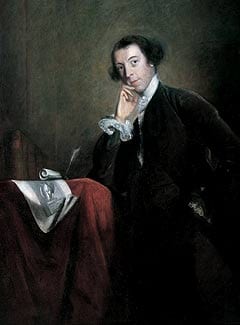Today marks the 290th anniversary of the birth of horace walpole, the brilliant aristocrat who with Otranto castle (1764) started the Gothic novel.
The author himself clarifies how this founding novel originated: “One morning at the beginning of last June, I woke up from a dream of which all I can remember is that I was in an old castle (…) and that, on the upper balustrade of a great staircase, I saw a gigantic iron-gloved hand. In the afternoon I sat down and started writing, not knowing what I really wanted to tell. The work grew in my hands ”.
Little by little the characters emerged (the tyrant Manfredo, the charming Isabel, the young Teodoro…) and the plot brimming with dramatic twists, with curses, identities that were revealed by surprise and spectral appearances. All set in a threatening space: that medieval castle from Walpole's dream, a scene present throughout most of the novel.
You could say that Otranto castle it's like a medieval torture machine full of rusty pulleys, gears, and spikes. Although it does not work and we perceive that it belongs to another era, its vision causes us a certain concern. Thus the novel, even with its flaws and weaknesses, sometimes manages to generate an inescapable ominous atmosphere.
And despite what might be expected, reading it provides entertainment. Perhaps thanks to the exaggerated twists in the plot and a humor that sometimes gives it a character that borders on the self-parodic. A self-parody, surely than voluntary, for Walpole was aware of both the limitations and the potential of his work. Thus he declares in the prologue to the second edition: “But [the author,] if the new path he has undertaken opens possibilities for men of greater talent, he will confess with pleasure and modesty that he was aware that the idea could receive better adornments than the who have offered their imagination or their handling of passions ”.
Still, Walpole's merit is great. More than big, huge. First for having planted this seed that would later bear fruit as The monkby MG Lewis. Second, because the creation of Otranto castle it constitutes an act of heroic rebellion before the literary and intellectual panorama of the XNUMXth century, dominated by rationalism and neoclassicism, which had cornered the imagination and pursued the taste for the supernatural in art.
It is the time of preceptors like Samuel Johnson, who in 1750 writes that the work of the novel consists of “causing natural events in a feasible way, and maintaining curiosity without the help of wonder: it is therefore excluded from the mechanisms and resources of heroic romance; and he cannot employ giants to snatch a lady from the nuptial rites, nor knights to bring her back: neither can he disorient his characters in deserts or host them in imaginary castles ”.
Giants, kidnapped ladies, heroic knights, imaginary castles ... just the elements that Walpole will use in Otranto castle. Besides specters, mysteries and curses, of course.
To facilitate the acceptance of his novel, Walpole used the subterfuge of publishing it under a false name, as if it were the translation of a XNUMXth century Italian copy found in an old library. The deception was effective, the novel became a public success and the second edition already appeared with his signature.
By now, it's clear that Horace Walpole was both a smart and eccentric character. Son of Sir Robert Walpole, English Prime Minister between 1721 and 1742, Earl of Orford, after traveling through Europe he seized a parliamentary post and led a life always in accordance with what he considered appropriate. From 1750 he lived in Strawberry Hill, a mansion that he reformed into a Gothic fantasy tailored to his tastes.
Apart from Otranto castle, wrote hundreds of pages between letters, memoirs, criticism, history and art studies, including a tragedy about incest, The mysterious mother, and a series of short stories called Hieroglyphic tales. There is no Spanish translation of the play, but there is from the storybook, and at the hands of Luís Alberto de Cuenca.
Walpole wrote these stories with a technique close to automatic writing, leaving the imagination to run free, without reason intervening beyond the initial intention of setting the action in the East. The result is fast, original stories, with an abundance of absurd elements that sometimes lead to the macabre, as in some Edward Gorey drawings. For Luís Alberto de Cuenca, they constitute an antecedent of French surrealism, and it would seem as if, like the Alice by Lewis Carroll, pay homage "to the turbulent and anarchist imagination of childhood."
In his edition of the Hieroglyphic talesBy the way, a 30-page appendix on the essential English Gothic novel is included for those interested in the genre and followers of fantasy and terrifying literature in general.

